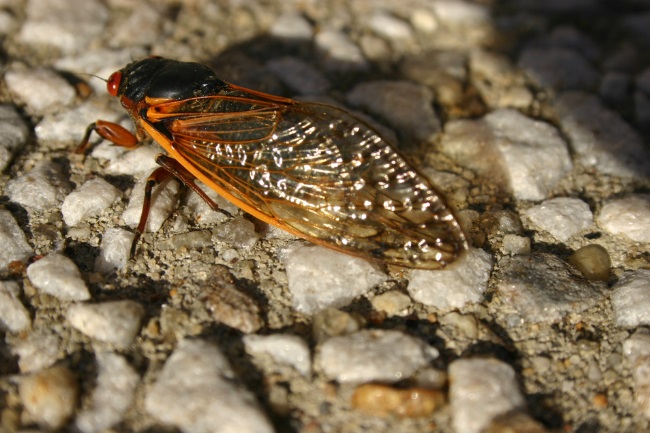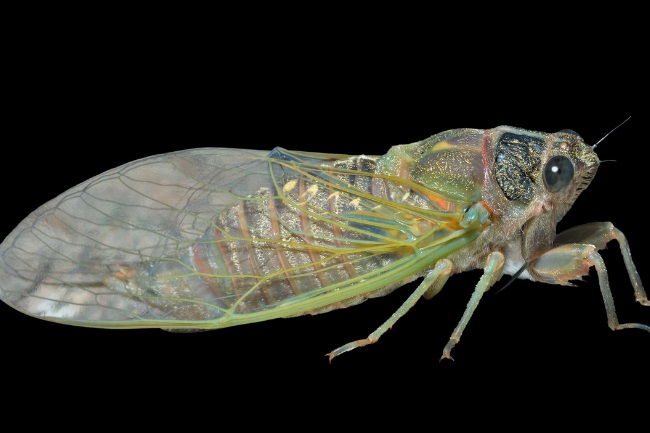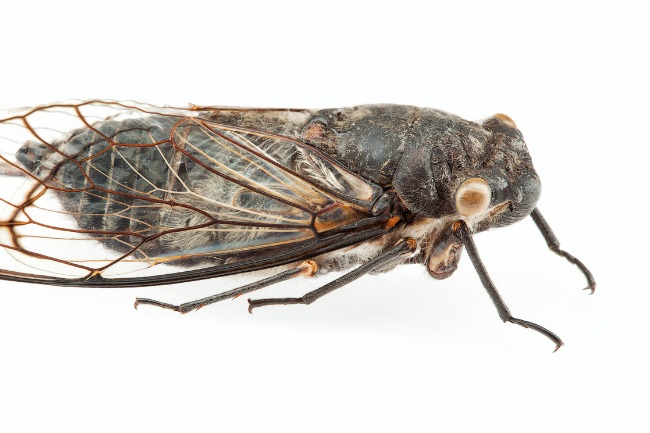Cicadas are famed for their rasping song, sung out into the hot summer air. It’s the adult males that sing, primarily to attract in a female. They make this noise through a number of means, but mainly through vibrating part of their exoskeleton called the tymbal.
Contents
What is a cicada?

There are over 3,000 species of cicada across the world. Cicadas are sap-sucking insects closely related to aphids and froghoppers. They start life underground before emerging to moult their juvenile skin and become adults. Most species live for 2 to 5 years, but some have life cycles up to 17 years. They are most famed for their ability to make a long buzzing sound, which can reach the noise level of a lawnmower.
Also read: How to Make a Caterpillar Habitat? (Step-by-Step Guide)
What do cicadas sound like?
Cicadas come in a variety of sizes and have varying methods of sound production. This means their songs can be different lengths, pitches or even a different quality of sound. For the majority of cicadas, however, a human listener would be likely to describe it as a buzzing or rasping noise.
| Cicada Species | Sound Description |
|---|---|
| Magicicada septendecim | Loud, buzzing, high-pitched mating call |
| Tibicen canicularis | Continuous, whining sound resembling a buzz |
| Neotibicen pruinosus | Series of short, pulsating buzzes |
| Okanagana rimosa | Raspy, metallic sound with rhythmic pulses |
| Diceroprocta apache | Quick, repeated clicking sound |
As many species sing at the same time, or even in chorus, this sound can seem to fill the air, as if the trees themselves are singing. They can also make clicking noises with their wings, or use vibrations to communicate.
How does a cicada make noise?
Cicadas have several different methods of sound production. The majority use a pair of tymbals, cleverly adapted areas of the exoskeleton located on the abdomen. This ridged structure is pulled quickly in and out by a small muscle, the vibrations creating a surprisingly loud sound for such a little insect. It is the males that sing out in this way, with the females general resorting to other methods to communicate, generally to reply to the male’s serenades.
| Mechanism | Description |
|---|---|
| Tymbal Organs | Males have specialized tymbal organs on their abdomen |
| Tymbal Muscle Contraction | Muscles contract rapidly to produce sound vibrations |
| Amplification | Sound is amplified by resonating air sacs in the abdomen |
| Sound Projection | Sound waves are projected through specialized abdominal structures |
The tymbal in some species is covered, while others are on the surface of the body. Males even have varied sizes of air sacs in their abdomens to help better project the sound. Cicadas can vibrate the tymbals constantly or in a rhythmic fashion, with different species often having distinctive calls. They can also position their bodies closer to further away from the surface below them to create a louder or quieter noise.

As well as using the tymbal to make music some species utilise a similar technique to that of grasshoppers. To do this, they rub their wings across small ridges on their exoskeleton to create a kind of clicking sound. This is called stridulation. The females of 13-year cicadas use this method to reply to the males, as they sing their more complex song.
Another method both grasshoppers and cicadas use is crepitation. This is where sound is created with just the wing. In grasshoppers, they create a kind of crackling by snapping them taut as they fly. In cicadas, they make a kind of clicking sound by hitting their wings against each other, their abdomens or nearby surfaces. Cicadas in the genus Platypedia in particular use this method, as they have lost their tymbals in the course of evolution.
Two species of cicada, in the primitive genus of Tettigarcta, found in Australia and Tasmania, are unusual for making no audible sound, at least not to the human ear. They still have a pair of tymbals but lack the hollow air sacs in their abdomens to amplify the sounds they create. Instead, they vibrate the substrate on which they are standing. It’s thought others of their species pick up these sounds through their feet.
Why does a cicada make noise?
Like most noise making animals, cicadas use different sounds to indicate different things. The primary use of their song, like that of grasshoppers, is for attracting a mate. It is, therefore, mostly the males we hear, singing their hearts out trying to bring in a female. However, there are several other reasons that a cicada might be calling out.
| Communication Behavior | Description |
|---|---|
| Mating Calls | Males produce loud, distinctive sounds to attract females |
| Courtship Calls | Males produce softer, more rhythmic sounds to court females |
| Distress Calls | Cicadas emit warning signals when threatened or attacked |
| Species Recognition | Cicadas use specific songs to identify their own species |
Warming up
Cicadas spend some time preparing themselves for their big performance, like a great artist practising his arpeggios before a concert. Sound production can be very tiring for many animals, and therefore not something to be rushed in to without limbering up.
Setting up territory and wooing
Some species of cicada can be heard up to a mile away, meaning their songs can call in females from far and wide. While we might not think the buzzing of these insects is particularly alluring, to a female it’s about as exciting as it gets.
Courtship call
Once a cicada has called in that lucky female, it’s essential that he makes her feel like the only one. To this end, cicadas will often change their song once they’ve spied a lucky lady, the female sometimes calling back to create a duet.
Chorusing
Males of many species choose to chorus, synchronise their rhythms or singing simultaneously, to draw females into an area. The female can then choose her favourite. Males will congregate for this method to be most effective, usually using particular chorus trees to assemble on.
Distress
Not all music is love songs. Sometimes, cicadas give out more of a cry of fright than a ballad of romance. Cicadas may use noise to warn off inquisitive animals, as they have little else to use in defence. Sometimes they might be lucky, and a brief burst of sound could be enough to let them slip through the fingers of a predator.
When does cicada make noise?

Cicadas can be surprisingly punctual when it comes to what time of day they sing. This may benefit them in creating a chorus of males to attract females to a specific area. It also means they are less at risk of being eaten by a predator, as they aren’t one lone cicada singing out their location, but many cicadas shouting at once. This will help create safety in numbers.
In general, cicadas sing in the day, during warm conditions, though it can certainly get too hot for them. Helpfully many cicadas have been named after the time of day they sing, such as the morning cicada, which sings before noon, and the Northern dusk-singing cicada, which sings at sunset.
It’s the adult cicadas that sing. For most, their adult life is very short, sometimes only a few weeks. The majority of their time is spent under the soil, living as a nymph. Most emerge from this safe home when temperatures rise high enough, and they have a short amount of time to sing their hearts out and find a mate before they die.
The periodic cicadas are some of the most well known due to their emergence after 13 or 17 years underground. They emerge on mass and can cause concern as they seem to appear from nowhere. Yet these noisy visitors are a natural cycle and a brilliant boost to many animals, through the sudden boom of nutritious food.
What does a cicada sound like at night?
Mostly cicadas do not sing at night, though many will sing late into the day. However, humans have a way of confusing nature with our bright lights and noise. Male cicadas can sometimes become convinced power tools, and lawnmowers are big impressive cicadas, which they should chorus with. The bright lights of our streets and houses can also confuse them into thinking it’s day.
Sometimes, nature encourages them to keep up their singing, such as a sweltering evening or overcrowding. And of course, a cicada may feel the need to tell you a thing or two if you disturb them.
The treetop songster
We often praise birds for the beauty of their songs yet dismiss the serenade of insects as nothing more than an annoying racket. While they may not be as melodious as our feathered friends, I would argue they are just as atmospheric. Who can sit and listen to a chorus of cicadas without thinking of a swelteringly hot summer’s day? Perhaps we’ll never find them quite as appealing as a robin or a lark, but our lives would undoubtedly be much more silent without them.

